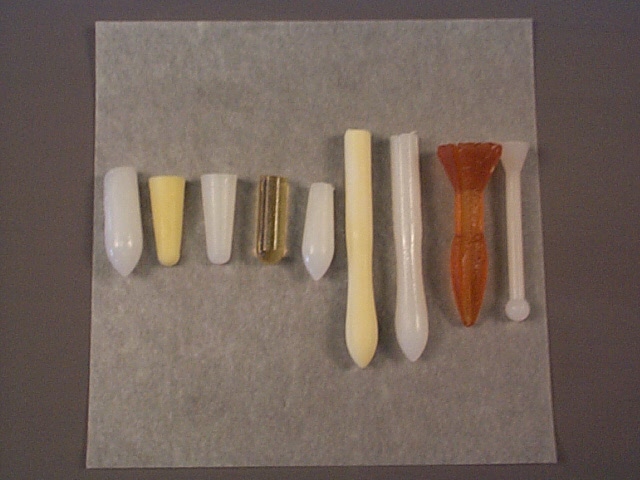Routes of Administration That Utilize Suppositories
Routes of Administration That
Utilize Suppositories
Suppositories are medicated solid formulations that are inserted into body
cavities. They are made in a variety of shapes and sizes because they are used
in many different routes of administration (body cavities).
Rectal
Drugs administered via the rectum are given for a local effect or to achieve
a systemic effect. Local effects may include the soothing of inflamed hemorrhoidal
tissues, promoting laxation, and enemas. Using rectal administration to achieve
systemic activity is preferred when the drug is destroyed in the GI tract, if
oral administration is not possible because of vomiting, or the patient is unconscious
or incapable of swallowing oral formulations. Rectal administration has been
used to treat a variety conditions such as asthma, nausea, motion sickness,
anxiety, and bacterial infections.
 The
most common rectal formulations are suppositories, solutions, and ointments.
Suppositories are solid dosage forms that dissolve or melt when inserted into
the rectum. Suppositories are manufactured in a variety of shapes. Rectal suppositories
for adults are tapered at one end and usually weigh about 2 grams. Infant rectal
suppositories usually weight about 1 gram or about half that of adult suppositories.
The
most common rectal formulations are suppositories, solutions, and ointments.
Suppositories are solid dosage forms that dissolve or melt when inserted into
the rectum. Suppositories are manufactured in a variety of shapes. Rectal suppositories
for adults are tapered at one end and usually weigh about 2 grams. Infant rectal
suppositories usually weight about 1 gram or about half that of adult suppositories.
The major disadvantages of rectal suppositories:
- They are not preferred by patients; they are inconvenient.
- Rectal absorption of most drugs is frequently erratic
and unpredictable.
- Some suppositories "leak" or are expelled
after insertion.
Vaginal
Vaginal administration has many advantages.
- Generally there is less drug degradation via this
route of administration compared to oral administration
- The dose can be retrieved if necessary
- There is the potential of long term drug absorption
with various intrauterine devices (IUDs).
Vaginal administration does lead to variable absorption since the vagina is
a physiologically and anatomically dynamic organ that causes pH and membrane
permeability to change over time. There is also a tendency of some dosage forms
to be expelled after insertion into the vagina.
Vaginal formulations include solutions, powders for solutions, ointments, creams,
aerosol foams, suppositories, and tablets. Vaginal suppositories are employed
as contraceptives, feminine hygiene antiseptics, bacterial antibiotics, or to
restore the vaginal mucosa. Vaginal suppositories are inserted high in the vaginal
tract with the aid of a special applicator. The suppositories are usually globular,
oviform, or cone-shaped and weigh between 3 - 5 grams. Patients should be instructed
to quickly dip the suppository in water before insertion. Because suppositories
are generally used at bedtime and can be messy if the formulation is an oleaginous
base, patients should wear a sanitary napkin to protect nightwear and bed linens.
Urethral
Urethral suppositories are not specifically described in the USP 24/NF19 either
by weight or dimension. Traditionally, they are cylindrical in shape (3 - 6
mm in diameter) and vary in length according to gender. Female urethral suppositories
can be 25 - 70 mm in length while male urethral suppositories can be about 50
- 125 mm in length. The one commercially available urethral suppository is actually
marketed as a "pellet," and is 1.4 mm in diameter and 3 or 6 mm in
length depending on strength. Urethral suppositories are unusual and may not
be encountered in a compounding practice.